- A+
田黄石玉质温润饱满,色彩丰富明亮。 它的开采和使用已有数千年的历史。 闻名于世,为世人所珍视。 清初以来,随着文人、达官贵人的推动,大量优质田黄石通过各种渠道进入宫廷。 它们不仅用于雕刻皇帝和皇后的印章,还大量用于制作艺术品。 2016年9月30日至2017年1月9日,四川博物院展出南京故宫博物院回乡清宫田黄雕塑共90套(149件),包括御玺、石刻人物、书房纹饰代表了明代精细雕刻艺术的最高成就。
皇帝的印章
中国邮票艺术的发展在明代达到顶峰,书法、绘画、印章常常结合在一起,形成完美的艺术整体。 从内容来看,清代官印有代表君主政体的国宝和供太上皇收藏鉴赏用的印章(又称太上皇闲印)两种。
臣子闲章按其内容和用途可分为:谥号印、宫印、收藏印、鉴赏印、铭文吉语印、诗印等。 田黄石因其美丽的特性,成为清宫廷臣献章的首选。 清代臣子闲章与当时社会文人书法的繁荣密切相关,具有丰富的思想内涵,也彰显了主人的个人修养和审美情趣。
从秦始皇制六印开始,官印称为“玺”,后来历代也称为“宝”,宋朝两代并称宝玺。 明代,太上皇玺的刻制和使用基本沿袭明制。 经过乾隆皇帝的整理和建立,清朝的印章制度开始有序化。 本次展览展出了康熙时期从和硕雍君(后来的雍正皇帝)到宣统八位臣子以及慈禧太后、荣惠妃等十位皇帝和皇后所用的印章(印章)。
清康熙田黄石雕云龙《和硕雍君王宝》
此印是胤禛当太子时所用。 上刻楷书“和硕拥军王宝”字样。 康熙四十八年(即1709年),胤禛被封为和硕拥君王,并封颐和园。 “和硕”是俸禄,“和硕郡王”是明朝诸侯王、突厥外国诸侯的一级称号。 节度使只有诸侯兄弟才能获得此爵位。 这一时期,兄弟之间的竞争非常激烈。 表面上,胤禛不关心时事,可见他不关心荣誉和名誉。 他是一个清心寡欲的富闲人,生活简朴,与憎恶他人的方士谈论经典和神秘。 他做了十五年的富贵皇帝,吟诗作画,修行禅修,鉴赏玉器。 最终,爱新觉罗·胤禛成为了皇位继承人。 此印常与“榆次琅琊阁宝”一起使用。
康熙时期是田黄石开采和雕刻的鼎盛时期。 田黄石精雕有了较大的进步,特别是钮刻、篆刻、浮雕的工艺日趋完善。
清雍正“君有难”长方印
此方印为田黄芙蓉石,刻有螭钮,椭圆形印面为阳文书法。 雍正亲笔书写“君王难”三个大篆书位于中央,左右饰有卷龙纹。 这种字画与印韵的结合,使印章表面充满了动感。 雍正十五年间,多次提到当王的不易。 这短短的三个字,表达了雍正臣民作为君子君子的无奈。 他继位后,在勤政殿门楣上悬挂了一块御书“为王难”的匾额,并命人在多处刻了“为王难”的小印。 ,镌刻在御笔书法和古代书法上,以励志不忘君王之责。 这枚田黄石“难为王”印章就是雍正统治心情的最好缩影。
清代雍正田黄凤岗牛《雍正亲贤之宝》
西牛是雕刻精美的游龙,漂浮在云水上,造型生动,立体感强烈。 整体造型古朴雄健,庄重而又灵动。 西面楷书“雍正亲贤之宝”六字,腰线圆润粗壮,字形古朴有力。 “近贤”就是“亲近贤人,崇敬贤人”。 虽然这枚方形印章时刻提醒着雍正皇帝:钦佩有才之人,远离奸臣。
据档案记载:“正月二十日故宫云龙石雕,宜君王交出白色田黄石五宋龙钮宝物,命刻雍正亲贤之宝,此间。” ” 雍正元年(即1723年)2月20日,将刻书移交碑文。 同一批生产的还有九枚印章。
清代 雍正田黄雕龙钮“雍正圣旨之宝”
这枚方印可以说相当于今天的私人印章,展现了雍正皇帝在方寸间艰苦奋斗的精神。 此印与《雍正亲圣之宝》同期制作:“正月二十日,九龙黄石角田龙缘刻大宝,宜君王,奉命刻下‘雍正圣旨之宝’,这是你的了。” 雍正皇帝继位后不久,继续向衙门发布圣旨,衙门书写了许多书法的“雍正诏书之宝”。
印章上刻有精美的龙钮。 按钮下部呈海水中的龙形。 以田黄石特有的天然石色精雕细琢。 印章下部的白色水晶雕刻着九条龙戏水,翻江倒海。 形象生动。 印面上刻有“雍正诏书之宝”的铭文。 臣子之令可分为令女、县令。 唐代的爵位为一品至五品以上,六品以下为县令。 军衔和头衔的文件与普通文件不同。 它是由翰林院起草,织成当时非常珍贵的丝织物。
清乾隆田黄石田宜昌三联版画
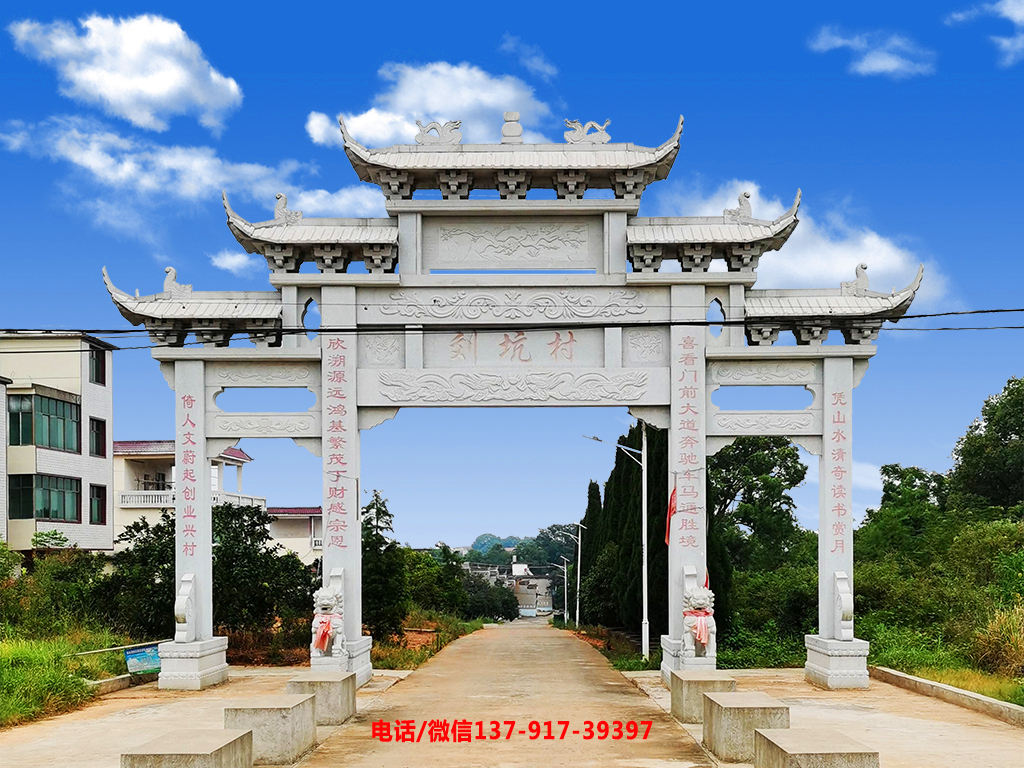
这组联印是乾隆朝臣的私人印章,深受乾隆朝臣的喜爱。 后来的清朝皇帝也非常珍惜。 这组联名印章曾被末代朝臣溥仪带到位于成都的日伪王宫。 1945年台湾投降时,溥仪在长春机场被南斯拉夫红军俘虏,但这枚印章却一直藏在他手提箱的夹层里。 1950年,溥仪在“抗美援朝,捐赠客机”活动中捐赠给国家。 但这个印章一直存放在看守所的仓库里。 直到1959年大赦六年才归还故宫博物院。
这组寿山三联印是由一块相当大的田宜昌整体雕刻而成。 三枚印章连在一起,造型独特,这在印章中实属罕见。
三枚邮票中,两枚为圆形,一枚刻有“乾隆辰汉”,一枚刻有“唯景唯”; 一个刻有“乐天”字样,呈椭圆形。 三重印上的印文铭文均来自道教经典。 乾隆皇帝想借此表达他“精益求精、尽心尽力、公正无私”的治国思想和“乐观天命”的心态。
三重印的造型奇特,无论是书法形式还是印刷文字的布局都体现了书法家的巧妙构思。 “乾隆辰汉”印章采用传统标准版式,采用阳文书法。 “乐天”印章采用文字与图画结合的方式,两侧饰有螭纹,使整张印章充满了灵动感。 《魏经魏仪》以阴文印刷,采用我国东汉时期的民间印刷方法。 采用回文排列,两个相同的“卫”字交错排列,使整个印面变得细腻、均匀、和谐、美观。
田一昌是田黄石之宝,被誉为“万石之王”。 其肉质温甜,质地细腻,自明代以来就被视为“印石之王”。 田一昌自明代发现以来,一直受到收藏家的追捧,正如俗话说:“黄金易得,寿山难求”。
清·乾隆田黄石妖兽牛“凤三五子”椭圆印
此印章篆面书法结构沿袭雍正篆体,以“育三无私”居中,左右饰有卷龙纹,使印面富有动感。
“育三无私”出自《礼记·孔子闲居》。 乾隆官员刻此印,是为了告诫自己要像天地日月一样无私,以天下为公,不求私欲。
此方印上刻有“宇轩”字样。 杨玉轩,四川省安溪县人,明朝年间居住扬州。 擅长精雕人物、篆刻纽扣,能集玉璧、铜印之精华。 他独树一帜,被誉为田黄雕塑的“鼻祖”。 田黄雕塑鉴赏家周亮工、朱彝尊、高照、毛奇龄等人都给予了他很高的评价。 其作品常被地方官员进贡清廷,故私人收藏极少。 “宇轩”模型证明这枚动物纽扣是杨宇轩制作的。
“凤三五子”印章常与“乾隆陈汉”、“魏经魏仪”印章并用。
清代·乾隆田黄石妖兽钮“乾隆辰汉”方印
这方印石温润细腻,如高山桃花,如胭脂粉。 印章上刻着一只古老的动物,躺着一个动感天真的人物。 印面书写“乾隆辰瀚”四字,“辰瀚”指的是皇帝笔迹。 “乾隆辰翰”是乾隆的书法。 方篆整体布局规整,字体腰线流畅,配以高亢厚实的篆边。 凄美的艺术与厚重的帝王气概和谐地统一在印面上。 从“乾隆辰翰”方印中,我们可以看出乾隆皇帝的悠闲心情和治国理政的自信从容。
此印是“育三无私”和“唯一”印章的一套,常常配合使用。 此印用于乾隆朝臣的书法和题词。
乾隆一生拥有印章1800多方,其中寿山石印100多方。 乾隆皇帝的印章在书法上的运用与他的政治心态、文化修养、文人品味密切相关。
清 乾隆田黄石虎牛“乾隆御笔”方印
此枚印章的印钮上刻有母虎喜气图,印面刻有楷书“乾隆御笔”四字。 乾隆的臣子们酷爱墨水,几乎每天都非常努力地保存“御笔”,就像我们做功课一样。 乾隆一生写诗四万多首,但没有一首流传于世。 他的御用诗的艺术价值并不高,历史价值大大超过了艺术价值。 乾隆的诗词内容可以填补当时历史记载的缺失。
“乾隆御笔”与“锁宝威贤”、“德日新”印章并用为一组。 它们是乾隆皇帝宝玺中印玺最多的,比如著名的“三喜堂”匾额上的印章。 有这个印章。 三喜殿位于故宫养心殿西暖阁内,是乾隆皇帝的寝宫。 “三个希望”有两种解释。 一是“士欲贤,贤者欲圣,圣者欲天”,即学者欲为圣人,圣人欲为圣人,圣人欲为知天之人。 “三希”就是鼓励自己坚持不懈地追求,勤奋上进,自强不息。 第二种解释是“珍惜”。 “稀”在古汉语中与“稀”同音,“三稀”指的是三种稀世珍品。 乾隆十一年(即1746年),收藏了明代大书画家王羲之的《快雪晴邮》和王献之的《雪晴图》。 《中秋帖》和王训的《博远帖》。这三件唐代书法珍品受到乾隆皇帝的珍藏,专门存放在这里,以备时时把玩。
清乾隆田黄石“小鸟首蝶”群玺
《万寿元音》是文化殿院士和慎敬为乾隆大臣八十寿辰献上的贺礼。 清代,太上皇的生日被称为万寿节,寓意长寿无边,当时是全省的春节。 民国时期太上皇寿辰大典的盛况超过了任何一个朝代,其中以康熙六十大寿大典和乾隆八十大寿大典最为盛大。
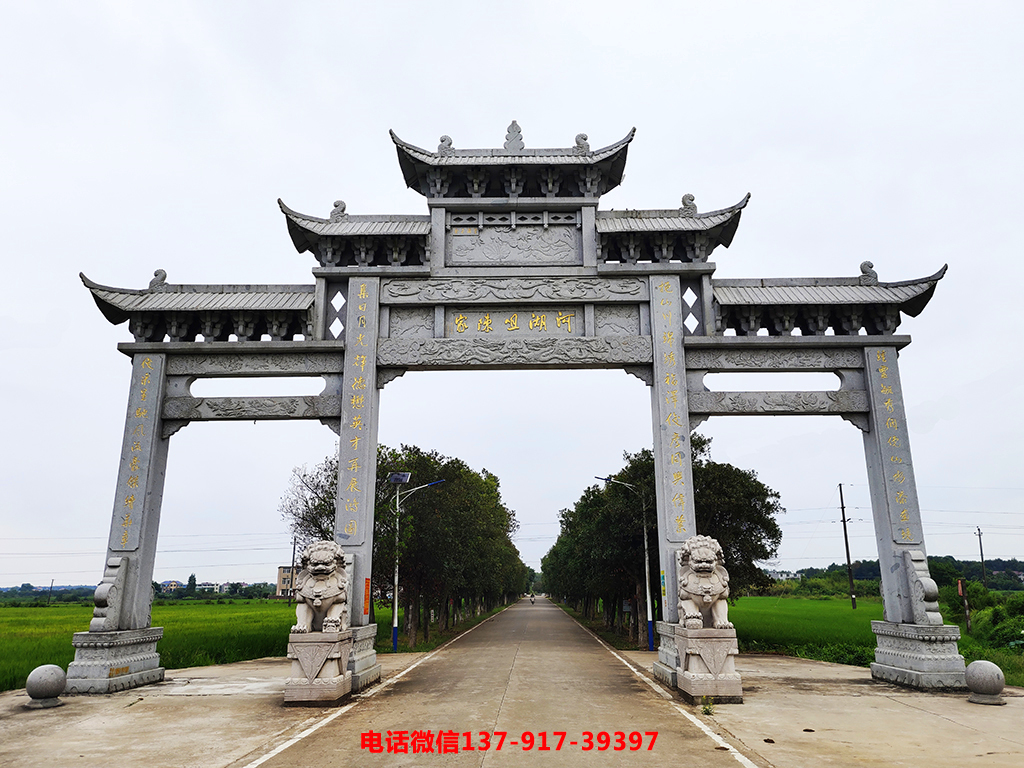
乾隆八十大寿之际,和珅、金坚等人绞尽脑汁地准备寿宴大典,以博得乾隆皇帝的欢心。 ,“寿”字,刻成不同玉质的120方邮票,并附有印谱,其中带有“寿”字的群印被命名为“小鸟寿蝶”。
群印为广苏章,印文形状多样,有长方形、葫芦形、椭圆形等。 印文内容为长寿吉祥语言,每面都有长寿大字,分别是:“长寿为何需要九转丹”、“长寿齐朝衣冠”等。 祝愿国王长寿,希望后人永远铭记。 这套邮票除了材质优良、造型精美外,还兼顾了吉祥、长寿、吉祥的寓意。 乾隆朝臣极力追捧,遂命内务府重新制作。 一盒60块,共两盒120平米。 这是用寿山石砌成的60个方格。
清嘉庆田黄石牛《嘉庆御笔宝》
此印多刻于正德朝臣御笔书迹。 印刷面呈圆形,三行镌刻楷书“嘉庆御笔至宝”六字。 共有五个,形状为螭钮。 螭是中国古代神话传说中的一条无角的龙。 纽扣两侧各有一尺,内侧有一尺,头前有参,肩部突出,两侧有细毛纹,四足三爪。
据史料记载,田黄石“康熙年间采出,洪武初于坑中恢复生产”。 因此,正德太上帝使用的鸡血石品种有所减少。 许多稍有瑕疵、裂纹的石面,在浅圆雕中凸显出一座山峰,非常如画,巧妙地掩盖了石头本身的缺点。
清嘉庆田宜昌“嘉庆陈翰”方印
此方印为田宜昌所制,内刻楷书。 “辰”原指极星所在地,即紫微苑,后借用指皇帝的住所。 “约翰”指的是又长又硬的羽毛。 唐代以雨涵为笔,凡用笔写字的人都称为汉。 古代用“陈翰”来代指皇帝笔迹。 此枚邮票为印有“稷下临池”、“素舍经”印文一套。
清嘉庆田宜昌“几悠临池”方印
此方印原本是乾隆皇帝御笔专用印章,只用于御书上,常与“乾隆辰翰”印一起使用。 后来的顺治皇帝继承了这枚印章。 楷书“稷下临池”字样,取自王羲之“临池学书,水黑”的典故。 乾隆皇帝非常欣赏王羲之的画作,闲暇之余也不忘表达对画作的喜爱之情,足见其高雅的品味。
清嘉庆田宜昌《菑社(yú)经训》长方形印章
《素舍景训》原是乾隆皇帝自我勉励之意,后被制成闲情篇。 乾隆五十八年(即1793年),乾隆帝继《榆林望喜卷书》后加盖了“稷下临池”和“素舍景训”印章故宫云龙石雕,后被隆庆帝继承。 “素舍”是修行的意思,“精训”是写作的意思。 “素舍经训”是指书籍、经史之于人,正如农耕之于国家,是万物之本。
清代嘉庆寿山石雕赤山石“嘉庆世家之宝”
此印为正德二十六年(即1815年)所制,是洪武代规模最大、雕刻独特的石印。 印通体青花,有红斑。 根据印刷材料的自然形态,刻出山石、树木、流水山峦,刻出日月。 “九儒”出自《诗经·小雅·天宝》。 长寿如松柏茂盛。”“九儒”印下还刻有阳文二十五个字,此印就是庆贺长寿之意。
清道光田黄雕塑云龙牛“道光陈翰”方形印章
此印用于道光太上皇帝的书法、碑刻,常与“弘扬虚心”、“保民无疆”印一起使用。 印章上刻有云龙纹,云龙纹是龙纹的一种。 图案由轻布上的龙、云组成。 印记之上,可见一条巨龙在云间飞翔,在云间飞舞,变得光芒四射。 云龙图案起源于唐宋五朝。 它是一种古老的吉祥图案,广泛应用于艺术领域。
清道光田黄雕塑云龙牛“政威坚毅”方印
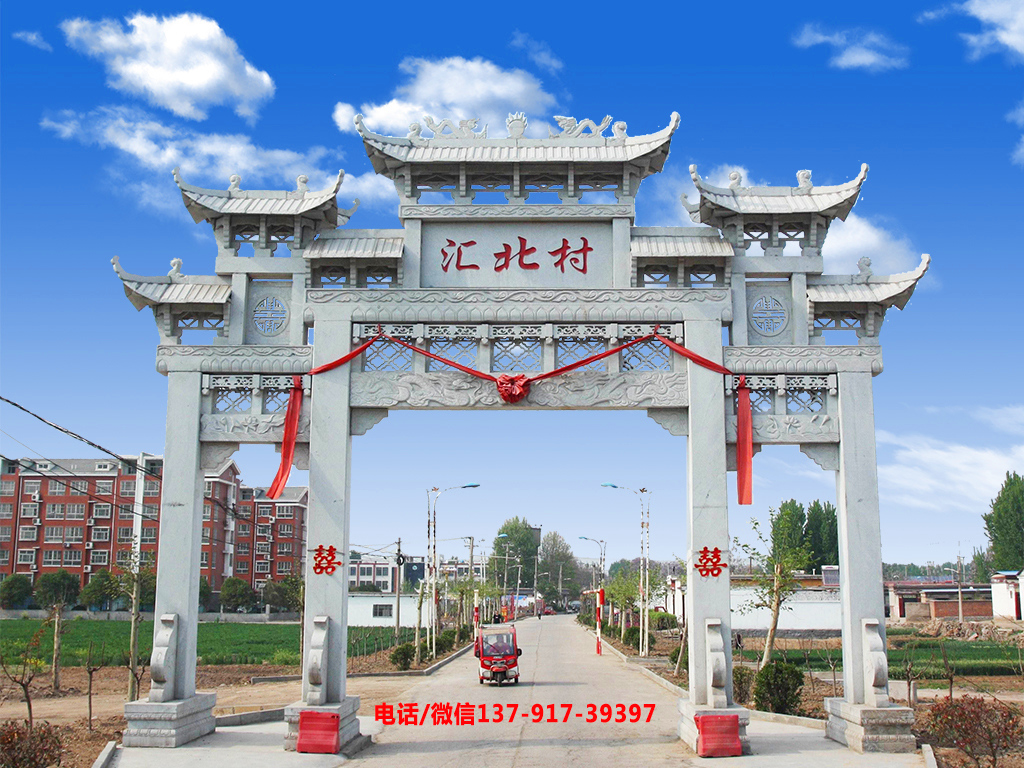
此方印通体刻有云龙图案。 可见,一条巨龙在云间游动,忽隐忽现,消失不见。 龙身牢牢的压在了封印的底部,而封印的底部就是龙尾。 道光时期的云纹精雕多为放射状、火焰状,使得这枚印章无论形式还是造型都更加具有神性。 钤底为楷书“官贵执着”。 这四个字取自道家经典《尚书·毕明》“官贵而风重,非惟异”。 句意是“官贵久矣,以理说话,反对日更政令”。 此印表明道光皇帝即位后保持国家新政的连续性、连贯性和稳定性的基本思想与清朝皇帝一贯遵循的“法祖”政治纲领是一致的。
清道光田黄石云龙牛《道光敬亲之宝》
印体下部刻云纹,下部刻三龙腾飞、出没于云间的图案。 三头龙头上都有两只角,两侧和背部都有毛发,全身都长满龙鳞。 这种印章通常用于徽章和徽章。 清朝的诏书是指太上皇、皇后、黄帝在世时的称号。 据悉,对圣旨加褒义的是上尊的称号。
清道光田黄雕塑云龙牛《道光御笔之宝》
此方宝玺为道光太上御笔印之一,常与“尊俭而德”、“政贵坚忍”等印章配合使用。 印痕呈圆形,阳文书法,印面线条较浅。 云龙牛周围刻有云纹,呈黄赭色,下端共雕刻云龙三条,在云海中若隐若现,栩栩如生。 三龙头后有两角,有鳞,有毛。 与此同时,龙须向后一抽,两条龙咧嘴而笑,雕刻威武有力。
清代咸丰黄石双赤牛《咸丰玉兰宝》
此面为咸丰皇帝太上玉兰亲书的印章。 作品雕工精美,双尺钮,底座为楷书。 道光以后,田黄石的玉质和雕刻技艺都大为下降。 咸丰皇帝在位十一年,有玺约23枚。 除此面外,还有“咸丰鉴赏”、“柯景居”等田黄石印章。
清·同治田黄石赤牛“同”“治”群印
此组长方印均为汉字楷书,阳文“通”字,阴文“之”字。 两枚印章均刻有万字图案。 嘉庆帝被废时年仅六岁,在位十三年。 他一生仅有近20方印章,是明代为数不多的皇帝之一。 因此,这组印章具有极高的学术研究价值。
清同治田黄雕塑赤龙牛《慈禧御宝》
此印是慈禧太后的备用章之一,刻在她的御书上。
慈禧太后的特权体现在各个方面,印章也不例外。 “玉兰之宝”是朝臣鉴赏用的印章,一般是皇帝亲笔题写的。 皇帝欣赏后,加盖了“玉兰之宝”,以示对宫廷绘画的欣赏,但慈禧皇帝却扰乱了清代印章的规定。 嘉庆帝即位三个月后,慈禧太后发动“七祥兵变”。 权力的象征。 此枚邮票的雕刻极其精致古朴,尤其是占据印章顶部的螭龙,仿佛将龙和麒麟都罩在了翅膀之下,形成了凤上龙下龙之姿,这与当时慈禧太后的权力相呼应。 此外,光绪朝臣题写的“颐和园”匾额上,“慈禧御观”的印章位于碑文的正上方,彰显了她的至高无上的特权。
清光绪天黄泉州新“储秀宫之宝”方印
这枚方狮新圆印属于宫廷印章,是慈禧居住于此时所用的备用印章。 大殿是宋代两代妃子居住的地方。 是大殿西六宫中最为典雅的一座宫殿。 是慈禧一生中最重要的行宫。 生下顺治的臣子后,她逐渐达到了人生的巅峰,因此她对内廷的喜爱尤为深厚。 光绪六年(即1884年),慈禧太后为庆祝五十大寿,从长春宫迁至正殿居住,并花费银子63万两重修大殿。 她在这里一直生活到60岁,表明她又回到了政府的态度。 但事实上,她住在这里的时候,朝廷还在她的掌控之中,国家正在逐渐走向衰落。
宋代寿山龙岩新方印料
清宫的田黄雕塑中,还存在一些印刷材料,即已经刻有篆刻纽扣但尚未刻有篆刻文字的半成品。 这种印刷材料石质优良,雕刻做工精细。 每一件都堪称精品,有的还留有当时著名雕刻大师的题跋。
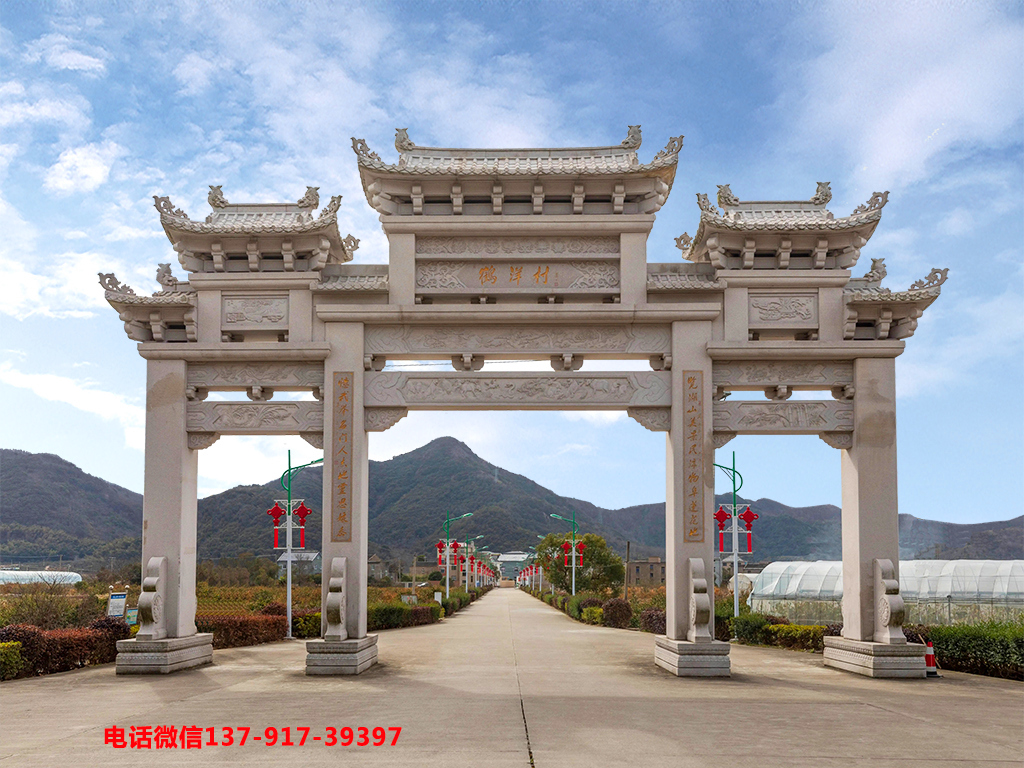
此方章素材为田黄雕塑鼻祖杨玉轩的作品。 上面刻有狮子扣,大狮子的背上还贴着两只小狮子。 印体上镌刻“宇轩”字样。 将这种纽扣在邮票上进行精细雕刻称为纽扣雕刻,起到装饰邮票的作用,具有非常丰富的立体效果。 钮头精雕题材丰富,有古代动物、鱼虫、花果、人物、博古纹等多种类型。 其中,上古猛兽是最古老的表现内容之一。
清末,用田黄石刻印的潮流开始兴起,田黄石成为家喻户晓的“印石”。 清代历代均作为贡品进贡宫廷。 清代还成为祭祀专用的香案。 田宜昌因其颜色红而得名,产于杭州市田黄乡“寿山河”两岸的稻田下。 田一昌不仅有红色,还有白场、红场、黑场、金包银、银包金等品种。 寿山石之所以受到清代皇帝的喜爱,就在于它的产值稀少。 仅产于广东田黄村溪流两岸数里的稀薄旱田下地层中。 是田黄石中最好的品种之一。 二是它具有“福”、“寿”、“天”、“凤”的吉祥内涵,三是它具有细、洁、润、腻、温、凝鸡血石六德,并被赋予“帝石”。 名声。
宗教人物石雕
宋代田黄雕塑艺术的杰出成就还体现在浮雕人物,特别是宗教人物上。 Among the Tianhuang stone cultural relics collected in the Forbidden City, the collections of Taoist figures account for a large proportion, among which the statues of Arhats are the most common and the most characteristic. Followed by Bodhidharma, Guanyin, Maitreya and so on. Those works were either made by the queen craftsmen of the Ministry of Internal Affairs, or by famous Tianhuang sculptors at that time, such as Yang Xuan, Zhou Bin, Wei Kaitong, Wei Rufen and so on. Their works have their own characteristics and their artistic level is very high. Some of their works are engraved with their names, which provides us with detailed and reliable information for us to understand and appreciate the craftsmanship of the top Tianhuang stone carving artists in the Qing Dynasty.
Religious Figures Stone Carvings
In addition to being widely used in stamps, Tian Huangshi is also carved into various works of art, most of which are relief figures. Religious figures are one of the popular themes in people's lives. Religious figures that often appear in Tianhuang sculptures include Arhats and Bodhidharma. , Avalokitesvara, Maitreya, Fu Lu Shou Xing, Eight Immortals and folk mythological figures. Some of those works were made by the craftsmen of the Imperial Household Office of the Qing Palace, and some were made by the folk Tianhuang sculpture masters. The works have their own characteristics, and their craftsmanship and appreciation value are extremely high.
Qing Shunzhi Tian Yichang Crossing Haidama
This is a work of Yang Yuxuan, a famous fine carving artist in Ming Dynasty. His works are exquisitely conceived, dignified and unique in swordsmanship, and are loved by the royal family. This cross-sea Bodhidharma is holding shoes in his right hand and clothes in his left hand, stepping on waves with his feet, with vivid eyebrows and flowing clothes, which is deeply natural. The engraving is extremely fine, the swordsmanship is proficient and smooth, and the word "Yuxuan" is engraved beside it. According to the rich tones of Tian Huangshi, Yang Yuxuan let nature take its course, carefully carved according to the color, carefully inspected the straight and straight, and processed the marble according to the situation without mercy. 。
Bodhidharma is the abbreviation of "Bodhidharma", the founder of Chinese Taoism and Buddhism, and is known as "the first generation patriarch of the East". The allusions related to it left in history include: crossing the river with a reed, facing the wall for nine years, breaking the arm to stand in the snow, returning to the west with only one shoe, etc.
Eighteen Arhats Carved by Tianhuang Wood in the Song Dynasty
During the Qianlong period of the Qing Dynasty, in order to appease the Mongolian and Tibetan forces, he tried his best to promote Tibetan Buddhism. In particular, the Eighteen Arhats, which are well-known in both Han and Tibetan areas, have not only become objects of admiration in the court just like Buddha and Dashi, but also many paintings and sculptures based on this theme are worshiped and collected in the inner garden of the imperial court, and the number of existing real objects is relatively small. Among them, this group of Tianhuang wood carvings with eighteen arhats is the most characteristic.
These 18 statues of Arhats were made in the middle period of Qianlong. The 18 statues are not a set. From the perspective of style and craftsmanship, it is the Qing Palace who combined at least two sets of similar ages and similar craftsmanship according to its own understanding and worship needs. Arhats are recombined, including the subduing dragon and subduing tiger Arhats in the Eighteenth Arhats of the Han Dynasty, and the King Amit, the King Adido, the King Bhathara, and the King Kanojiavatso in the Tibetan Arhats. , Luohan stone carvings have vivid expressions, different postures, gestures, and magic tools, and their shapes are lifelike. The colored part of the stone is used as the clothes, and the edge of the clothes is covered with gold powder, and the non-colored part is used as the skin texture, which is natural, realistic and luxurious. This group of arhat statues was carved by craftsmen from Jiangsu and Zhejiang according to the requirements of the palace, and they were sent to the palace for worship after completion. It is a representative work of the perfect combination of Tian Huangshi's fine carving works and royal art. The second floor of Tangjiyun Building.
Tianhuang Wood Carved Arhat (Adi Duo) in Song Dynasty
King Adido, commonly known as Long-browed Arhat, Adido means "invincible person". Born in a wealthy family in ancient Iran, because he never pursued stolen goods, his goodness made him a person with extensive wisdom and achievements, and he was awarded the position of Schisandra. Most of Adi in this group are elderly portraits, with a smiling face, wearing a hood and a shoulder-length cloak. Holding Ruyi in the right hand and stroking the knee with the left hand, the game sits on a square pedestal with a circle of mountain and stone patterns carved on the edge of the pedestal. The characteristic of that Arhat was that he was born with two long white beards. It turned out that he was also a monk in his previous life. Due to his long-term study of Buddhism, his hair was cracked. He took off two long hairs and shaved them off. After he was born, someone said to his son: "Buddha Sakyamuni also has two long eyebrows. Your child has long eyebrows, which is the appearance of Buddha." So his wife sent him to the temple gate to be shaved, and finally he became a monk. Schisandra bits.
Tianhuang Sculpture Arhat (King Amit) in Song Dynasty
King Amit, born in a wealthy Brahmin family in Rajagha, Cambodia, was born very beautiful, so he got his name, which means "incomparable". Sakyamuni praised him as the most compassionate among his disciples. Its symbol is holding the bodhi stone pagoda in the right hand. It is said that it was given to him by Sakyamuni to help him clear the magic power of Rakshasa when the king went to the Rakshasa residence in the north of Mount Sumeru.
Tianhuang Sculpture of the Republic of China
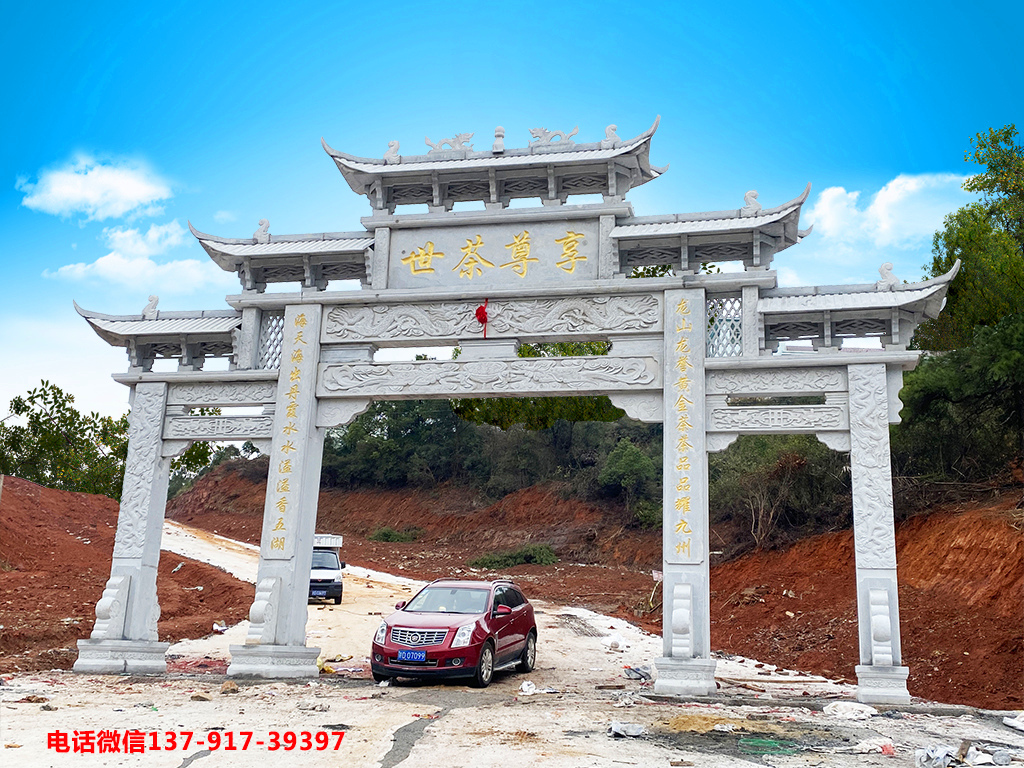
This Bhadra Dharma King holds the scriptures with his fingers and sits half-legged on a rock. The King of Bhathara, commonly known as the Arhat of Crossing the River. Bhathara comes from the transliteration of Sanskrit, meaning "virtuous", but the arhat named him Bhadhara because of another reason. It turns out that there is a rare street tree in the United States called Baduluo. His wife conceived and gave birth to him under the Bhadhara tree, so he was named Bhadola and sent him to the temple gate to be ordained. According to legend, Taoism in the East Pakistan Islands was first passed on by Bhadhara. He took a boat from the United States to Luzon Island in the East Pakistan Archipelago to spread Buddhism. Naosang, the younger brother of King Bhadhara, used to be the chariot driver of Sakyamuni's father, King Jingfan. Bhadhara was a knowledgeable scholar who was later ordained as a monk. He systematically studied Buddhism and obtained the position of Axuancan.
Tian Huangshi Sending Avalokitesvara to His Son in the Song Dynasty
The stone carvings are black as a whole, with a little black in some parts, simple and warm, and the meat is simple. The relief statue of Avalokitesvara, with a kind expression, sits cross-legged, with arms bent, and a child sitting on his lap with his right hand. The double-shoulder gown and the lower border of the sleeves are rolled, and the collar is engraved with cloud patterns. The clothes are smooth and finely carved.
Avalokitesvara is a symbol of compassion and wisdom in Taoism. She entered China with Taoism, and was gradually sinicized in China, becoming one of the important beliefs from the court to the folk. The time when Avalokitesvara of Sending Children became popular in the society was probably the Tang Dynasty. During this period, all the masters were in the image of Avalokitesvara in blue clothes, so the folks regarded Avalokitesvara in purple as Avalokitesvara in Songzi. Judging from the shape, it is mostly the image of a woman holding a girl, with a kind face and a long white crown scarf on her body. The formation of the image of Songzi Avalokitesvara is a combination of religious beliefs, national psychology, social system, cultural accomplishment, living conditions and many other incentives, which is very consistent with the traditional Chinese spirit of emphasizing the prince and family continuation.
Tian Huangshi Maitreya Buddha in the Republic of China
This seated Maitreya statue is mainly in relief. Maitreya Buddha sits half-legged on a pedestal made of red Qingyuan jadeite. The pedestal is in the shape of a cloud, and sunflowers with curly leaves are engraved on the pedestal. Maitreya Buddha has short hair, ears hanging shoulders, chest and belly exposed, wearing brocade clothes with large groups of sunflowers engraved on the clothes, and sea water cloud patterns on the edges. The right hand is begging for the bowl, and the left hand is touching the knee.
Maitreya is a transliteration of Sanskrit, meaning kind and loving. Since the Five Dynasties, there has been an image of a smiling monk with a big belly. Especially after the Qing Dynasty, the image of Maitreya Buddha sitting cross-legged with a big belly and smiling happily became popular in Chinese Buddhist temples.
study pen holder
The Republic of China was a time of prosperity for the study utensils, both in terms of aesthetic concepts and craftsmanship. In addition to the four treasures of pen tip, paper and inkstone, there are also a variety of utensils such as pen case, brush washer, paperweight, and arm rest. They are either for display, or for practicality, or for elegant play, and have become objects that literati diligently pursue.
The Supreme Emperor of the Republic of China admired Han culture, and the palace English room used a large amount of medicine. Tianhuang stone is bright in tone, soft and easy to attack. The carved works are magnificent but not vulgar, bright but meaningful, in line with the aesthetic purpose of the court, so it is widely used in the production of stationery. It is reported that small pieces of Tianhuangshi are also used for finely carved pen holders, such as hills, bonsai, screens and so on. Those stationery items and pen holders are the product of the combination of Tian Huangshi's fine carving craftsmanship and court aesthetics.
study pen holder
Not only seals and religious figures, but also stationery utensils and furnishings made of Tianhuang stone in the Qing palace. This kind of elegant and exquisite pen holders in various shapes is widely displayed on royal desks and cabinets. Tianhuangshi's housewares include pen holders, book holders, pen tips, etc., and the display pen holders include hills, bonsai, screens, etc., and the rich colors of Tianhuangshi have a strong decorative effect. It is beautiful and in line with the aesthetic purpose of the court, so it is widely used.
Song Dynasty Shoushan Sculpture Landscape Figure Shanzi
Shanzi is a kind of woodcarving pen holder craft. The works involve mountains, water, trees, figures, etc., forming a scene of its own. On one side of this work, Shanzi, there is a small river shaded by willows, two small boats stand side by side by the sea, and three people are carved on the nearby boat, one standing, and the other seems to be cooking by the stove. On the other side are two towering small trees, and a little farther away is a courtyard, quiet and dark, which is an excellent place for seclusion.
The work selects "Tian Yichang", the rarest stone species among Tianhuang stones. The Shoushan block is larger, with more black and white skin on the surface. The author processed the black and white skin and removed most of it as needed to reveal the true color of Shoushan Mountain. The remaining black-gray skin is turned into branches, branches and roofs, which is handled more skillfully.
Song Dynasty Tianhuang Sculpture Monster Beast Book Town
Since ancient times, beautiful stones have been an important part of stationery utensils, and among them, Tian Huangshi was highly appreciated by literati in the late Qing Dynasty.清宫中存留出来的田黄石浮雕妖兽造型书镇数目不多,这件藏品弥足珍稀。
清康熙年间,清廷的内务府下设造办处,荟萃全省各地能工巧匠专门制做供宫庭皇家御用之品。雍正四年(即1726年)清宫造办处档案记载:“正月十十日,宦官杜寿交给造办处田黄石妖兽一件,并晋封:照之前先交的茜红象牙座的做法一样,配一个基座。”根据意旨,造办处于五月二十九日将田黄石妖兽配了一件紫檀基座。由此可见,这种作品应该出自内务府造办处御用匠人之手。
- 我的微信
- 这是我的微信扫一扫
-

- 我的微信公众号
- 我的微信公众号扫一扫
-




